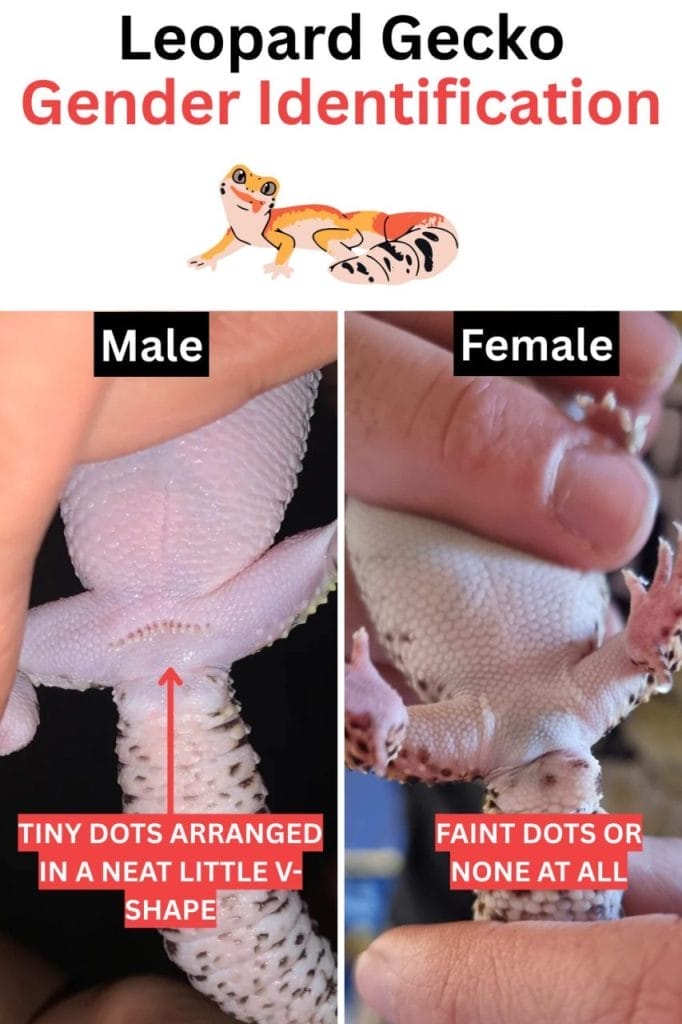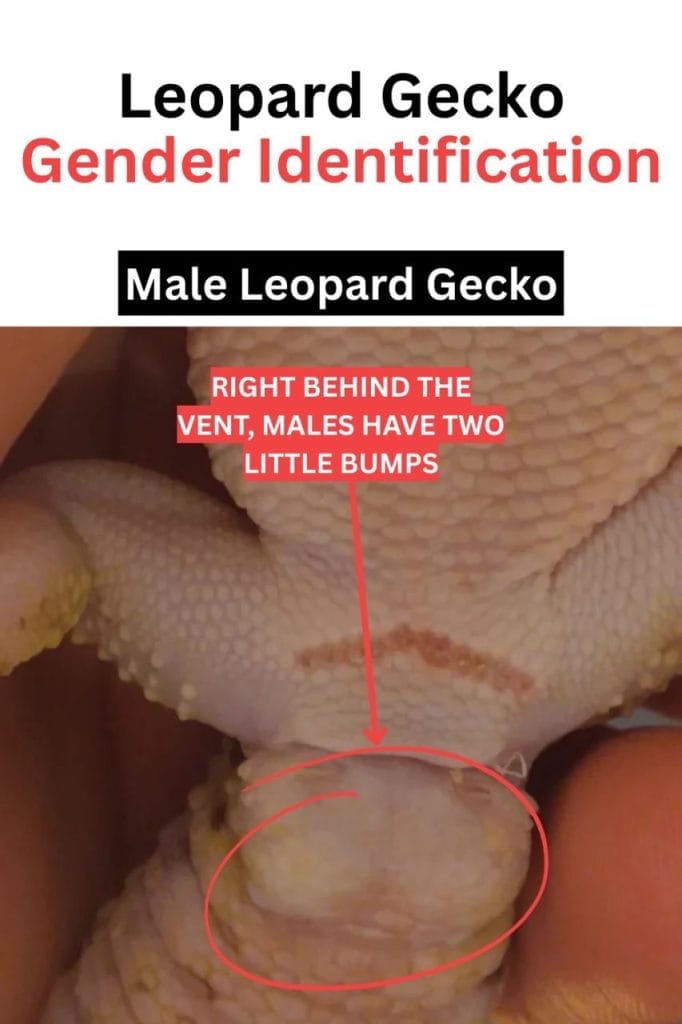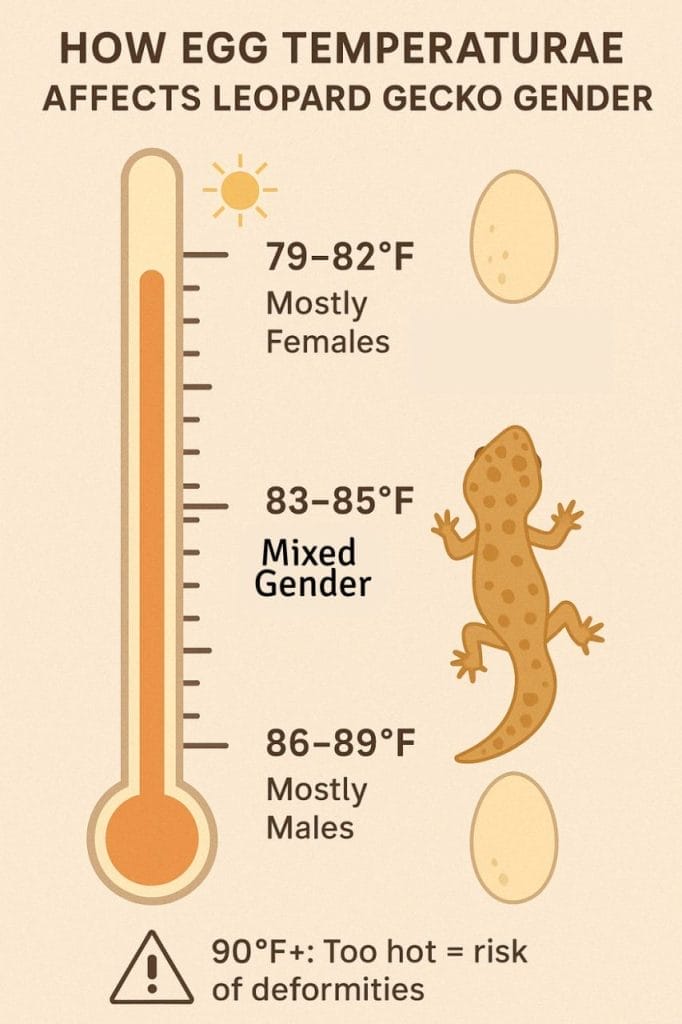This post was created with help from AI tools and carefully reviewed by a human (Muntaseer Rahman) . For more on how we use AI on this site, check out our Editorial Policy.
Check Out These FREE Tools We Made JUST For You!
How To Tell The Gender Of A Leopard Gecko?

You know you’re deep into pet parent life when you find yourself squinting at lizard privates like a confused scientist.
Figuring out if your leopard gecko is a boy or girl? Yeah, it’s a thing—and no, it’s not as weird as it sounds (okay, maybe just a little).
Let’s demystify the process.

At What Age Can You Tell Leopard Gecko’s Gender?
I still remember the first time I tried to figure out if my gecko was a boy or girl. I tilted him like a seasoned vet, flashlight in hand, confidence on my face… and then stared blankly at his belly for 10 minutes. Nothing looked obvious. Just skin folds and judgment from his little eyes.
Turns out, I was way too early.
Here’s the thing: leopard geckos don’t show clear gender signs as babies. You need to wait until they grow up a bit. Trying too early is like guessing a movie’s plot from the opening credits.
| Age | Size Needed | Can You Tell Gender? |
|---|---|---|
| 1-3 months | Under 4 inches | Nope, way too early |
| 4-5 months | Around 4.5 inches | Maybe, but not 100% |
| 5-6+ months | 5 inches or more | Yes, much easier and clearer |
Ideal Age for Sexing
Usually, you can tell their gender around:
- 5 to 6 months old
- Or when they’re about 5 inches long
This is when they hit gecko puberty (yes, that’s a thing), and the physical traits start to show clearly.
Why You Shouldn’t Rush It
Before this age:
- Pre-anal pores might be faint or not there at all
- Hemipenal bulges won’t be developed
- You might misidentify and mess up tank pairings
I once thought I had two girls. One day, they started fighting like two angry uncles at a family wedding. Guess what? One was a surprise male.
But Wait—Some Grow Faster Than Others
Gecko growth isn’t like baking cookies where every batch comes out the same. Some grow fast, some take their sweet time depending on:
- Diet and nutrition
- Temperature
- Genetics
- Stress levels
So always check based on size and maturity, not just the calendar.
Let your gecko grow in peace. When they’re ready, they’ll flash those gender clues without making you squint like you lost your glasses.
why finding out the gender is important?
I used to think gender didn’t really matter—until my supposedly two “chill females” turned into WWE wrestlers overnight. One was a male. Lesson learned the hard way.
Knowing your leopard gecko’s gender is more important than you might think. Here’s why:
1. Housing Needs
- Two males in the same tank? Bad idea. They’ll fight for territory.
- Male and female together? Expect eggs. Even if you didn’t sign up for parenthood.
If you’re planning a shared setup, knowing who’s who is non-negotiable.
2. Health & Egg-Laying
Female leopard geckos can lay eggs—even without a male around. It’s like a magic trick no one asked for. This means:
- They’ll need extra calcium
- A lay box for comfort
- Closer monitoring
Not knowing your gecko is female can lead to problems when eggs show up out of the blue.
3. Behavior and Temperament
Males often show more dominance and territorial behavior. Females might be calmer unless they’re about to lay.
If one gecko is acting spicy and you’re confused why—it might be a gender thing.
4. Breeding Plans
Planning to breed? Well, you kinda need to know who’s capable of what. Mating two females won’t get you far. Mating two males might get you bitten.
Male vs Female Leopard Gecko: Physical Differences
Trying to tell male from female leopard geckos feels a bit like playing reptile detective. You’re not looking for eyelashes or deep voices—you’re checking bums and bellies. I know, glamorous stuff.
Let’s break it down so you don’t end up as confused as I was with my “definitely-a-girl” Steve.

1. Pre-Anal Pores
These are tiny dots arranged in a neat little V-shape just above the vent (that’s the gecko’s poop exit, in case you’re new here).
- Males have large, dark, and very visible pores
- Females might have faint dots or none at all
Shine a light at the right angle and you’ll see them pop out on mature males like they’re proud of it.

2. Hemipenal Bulges
Right behind the vent, males have two little bumps at the base of the tail. These are the hemipenal bulges—which basically means gecko pockets for their boy parts.
- Males have obvious, rounded bulges
- Females have a smoother, flatter tail base
If you see no bulges, you’re probably looking at a lady. Unless it’s a young male still catching up on puberty.
3. Femoral Pores (Bonus Round)
In some geckos, especially larger morphs, femoral pores run down the thighs.
- More visible and defined in males
- Less pronounced in females
This one’s not always helpful, but worth a glance if you’re still unsure.
4. Body Shape (Slight Clues)
This isn’t a reliable method on its own, but some folks notice:
- Males: broader heads, thicker necks, chunkier build
- Females: slightly smaller and more streamlined
It’s like comparing a linebacker to a gymnast—same species, different frames.
Male vs Female Leopard Gecko: Behavioral Clues
Sometimes your gecko’s body doesn’t spill the beans right away. But their attitude? Oh, it snitches hard.
I once had a gecko that would strut around like he owned the terrarium, doing the gecko version of a flex. Turned out—yep, he was a boy.
Here’s how behavior can help you guess their gender, though it’s not always foolproof.
1. Males Can Be Territorial
- They often show dominance, especially if another gecko is nearby.
- You might see head bobbing, tail waving, or even trying to assert control over the warm hide like it’s prime real estate.
If your gecko acts like it’s auditioning for a mafia role, it might be a male.
2. Females Are Usually More Chill
- Females tend to be calmer on their own
- Less posturing, more lounging
That said, once breeding season kicks in—or if they’re gravid (carrying eggs)—they can get a bit moody too.
3. Courtship Behavior
If you ever see one gecko following another, doing rapid tail vibrations and creeping like it’s on a romantic mission… that’s a male.
Tail rattling is their way of saying, “Hey, I’m single and ready to mingle.”
4. Digging? Might Be a Gravid Female
Females about to lay eggs often start digging around their lay box or any soft substrate.
If you see one trying to dig a tunnel to Australia, she’s probably preparing to drop a few eggs soon.
Just remember: behavior isn’t always a guarantee. Some females are bossy, some males are mellow.
But when paired with physical signs, it gives you a much clearer picture of who’s who in your gecko crew.
How to Examine Your Gecko Safely?
Checking your leopard gecko’s gender sounds easy—until your gecko decides it wants none of your nonsense and sprints up your arm like it’s escaping jail. Been there.
So here’s how to do it without causing a gecko meltdown (or dropping them in panic).
1. Pick the Right Time
- Wait until your gecko is calm—not right after eating or during shedding
- Evening is usually better since that’s when they’re more relaxed
2. Gently Handle Your Gecko
- Scoop them up slowly—don’t grab
- Let them sit in your hand or crawl onto your palm
- Stay low to the ground in case they jump
Trust is everything. If you go full claw-machine, you’ll never get a second chance.
3. Use a Clear Container or Glass
Here’s the smoothest trick:
- Let your gecko crawl over a clear plastic tub or glass dish
- Peek underneath like you’re checking a secret message
- No flipping, no stress, just a sneaky peek
This is how I finally figured out my Steve was actually a Stephanie.
4. Use a Flashlight (But Not in Their Face)
- Shine it gently at the underside to spot pre-anal pores
- Don’t blind them—angle it from the side
- A phone light works fine
You’ll see more with a bit of light, especially if your gecko has darker skin.
5. Don’t Overdo It
- Keep the check quick—under 30 seconds is enough
- Return them to their tank right after
- Reward with a treat if they’re into that
They’re not huge fans of being handled belly-up. Be respectful, and your gecko won’t hold a grudge.
common leopard gecko Gender identification Mistakes
I once proudly told a friend my gecko was a male. Two months later, he laid eggs. Yep, I became part of the mistake club.
Here are some classic goof-ups people make when trying to guess their leopard gecko’s gender. Avoid these, and you’ll save yourself from both confusion and surprise egg-laying.
1. Trying Too Early
- Baby geckos don’t show clear signs
- Before 5–6 months, everything looks vague and squishy
- You’ll end up guessing and probably guessing wrong
2. Confusing Fat Deposits With Hemipenal Bulges
- Some females store fat at the tail base
- It may look like bulges, but it’s just healthy weight
- Real hemipenal bulges are firm and sit just below the vent
3. Misreading Faint Pores
- Both sexes may show some pores
- Males have bold, dark, and easy-to-spot ones
- Females may have light ones that confuse beginners
If you have to squint or use your imagination, it’s probably not a male.
4. Judging by Behavior Alone
- Not all dominant geckos are males
- Not all calm geckos are females
- Behavior helps, but it’s not proof
I once had a female that acted like a bouncer at a lizard nightclub. She still laid eggs like a champ.
5. Relying on One Sign Only
- Always check multiple traits: pre-anal pores, hemipenal bulges, behavior
- One clue is never enough
- Combine signs to get a clearer answer

Bonus: Temperature-Dependent Sex Determination (TSD)
Here’s a wild fact that blew my mind when I first learned it: leopard gecko eggs don’t just grow geckos—they decide the gecko’s gender based on the incubation temperature.
No, really. They don’t flip a coin. They go with the thermostat.
What Is TSD?
TSD stands for Temperature-Dependent Sex Determination.
It means the temperature the egg is incubated at decides if the hatchling will be male or female.
Your gecko’s gender? Literally cooked in.
The Typical Temperature Ranges
Here’s how it usually breaks down:
| Incubation Temp | Likely Gender |
|---|---|
| 79–82°F | Mostly females |
| 83–85°F | Mix of both |
| 86–89°F | Mostly males |
| 90°F+ | Risk of deformities or infertility |
So breeders can choose the sex by adjusting the incubator. Pretty slick, right?
But… It’s Not Always Perfect
- Genetics can sometimes override the temps
- Even at “male temps,” some females may hatch
- Mixed clutches can be unpredictable
I’ve seen geckos raised at male temps who turned out female just to keep things interesting.
TSD is cool science—but unless you’re breeding and tracking temps, it’s more of a fun fact than a sexing tool.
Still, knowing your gecko was temperature-programmed from the egg?
Pretty neat. They’re like little solar-powered surprises.
About Author
Hello, I’m Muntaseer Rahman, the owner of AcuarioPets.com. I’m passionate about aquarium pets like shrimps, snails, crabs, and crayfish. I’ve created this website to share my expertise and help you provide better care for these amazing pets.
Disclaimer
This site is owned and operated by Muntaseer Rahman. AcuarioPets.com is a participant in the Amazon Services LLC Associates Program, an affiliate advertising program designed to provide a means for sites to earn advertising fees by advertising and linking to Amazon.com. This site also participates in other affiliate programs and is compensated for referring traffic and business to these companies.

